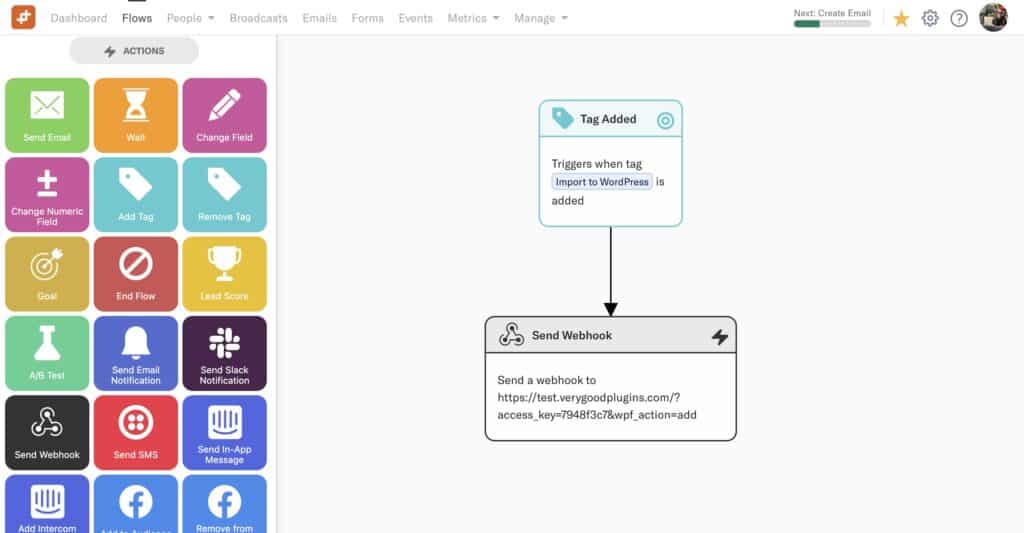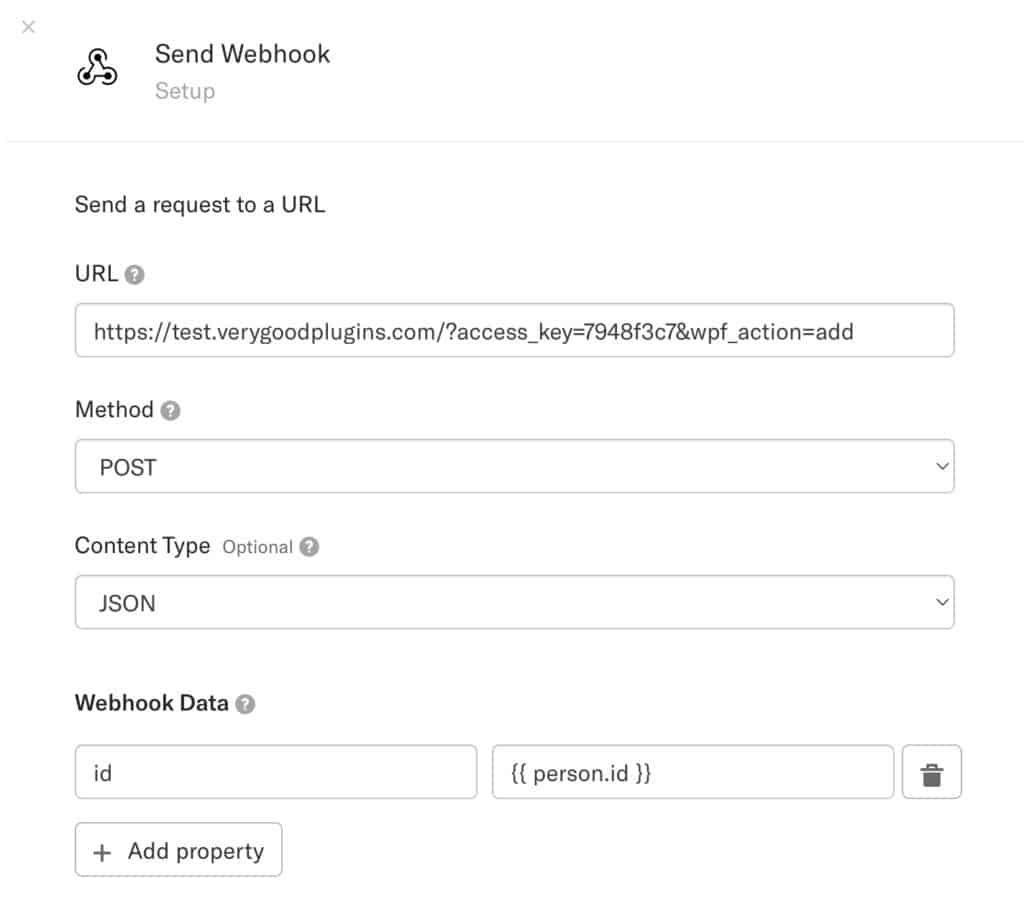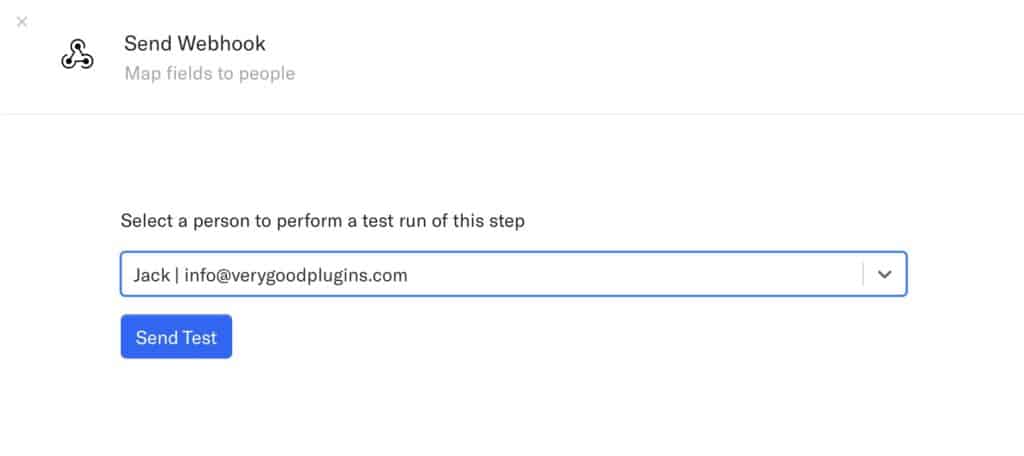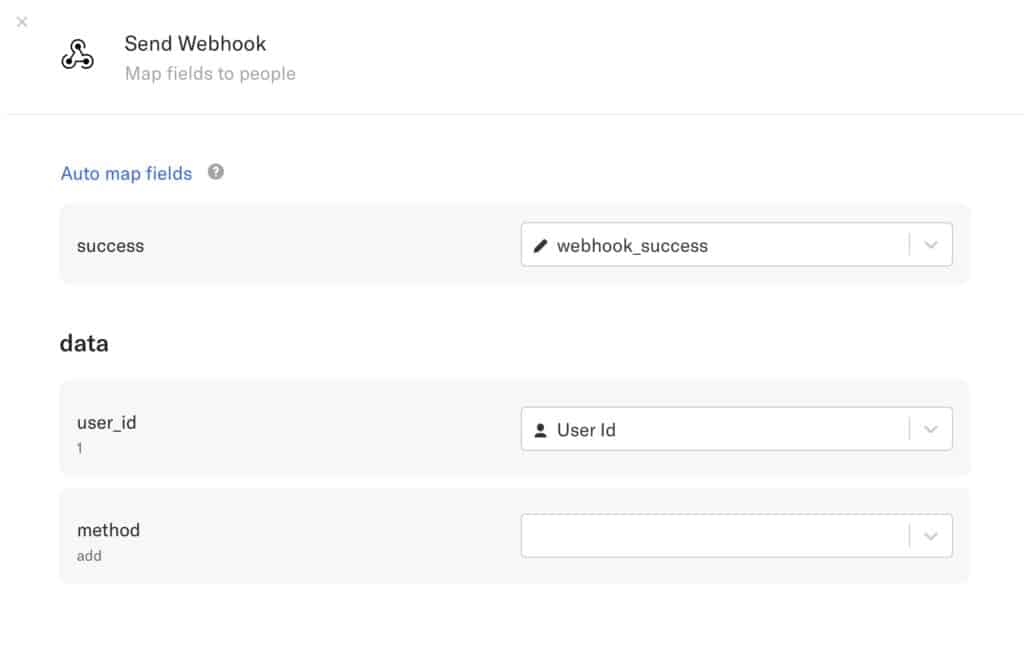#Overview
You can use webhooks in Encharge to send data back to your WordPress site using WP Fusion. Using webhooks you can create new users on your WordPress site based on flows in Encharge, or update existing users’ meta data and tags.
#Setup
To create a webhook, first navigate to Flows in Encharge, and create a new flow. Select your trigger. In this example, we will trigger the webhook when the Import to WordPress tag is applied to contact.
Connect the trigger to a Send Webhook action, and in the popup, enter the URL to your site, following the examples below.
For the Method and Content Type, leave the defaults (POST and JSON, respectively).
For the Webhook Data, use id and {{ person.id }} for the properties. This will identify the contact to WP Fusion. Click Save to continue.
In the next step, you can select a contact to use to test the webhook. Search for a test contact and click Send Test. You should see the incoming webhook data in the WP Fusion logs.
The final step will show the data retuned from the webhook. WP Fusion will respond whether or not the webhook was successful, and the user ID of the imported or updated user.
You can (optionally) copy this data into custom contact fields for use in your automations or marketing.
#Webhook URL parameters
You can format your webhook URL in a few different ways to customize the behavior:
#To update a user’s tags
To update an existing WordPress user’s tags from the contact record, the URL for the webhook should look like the following:
https://mydomain.com/?wpf_action=update_tags&access_key=YOURACCESSKEY
#To update a user’s tags and meta data
To update a user’s tags and pull any new meta data from Encharge for that contact, the URL for the webhook should look like the following:
https://mydomain.com/?wpf_action=update&access_key=YOURACCESSKEY
#Create a new user
To create a new user, use the following URL:
https://mydomain.com/?wpf_action=add&access_key=YOURACCESSKEY
You can also specify additional parameters in user creation. For example, to send the user a welcome email containing a link to log in on your site, use the following:
https://mydomain.com/?wpf_action=add&access_key=YOURACCESSKEY&send_notification=true
You can also specify a specific user role to be assigned to the new user. For example, to set the new user to the “customer” role, use the following:
https://mydomain.com/?wpf_action=add&access_key=YOURACCESSKEY&role=customer
Note that you have to have registered a “customer” role on your site for this to work. By default users will be assigned the role of “subscriber”.
The add method will update a user if an existing user already exists. It will not create a duplicate user.
user_login and user_pass on your website, the new users will be given the usernames and passwords stored in their Encharge contact record.#User passwords
New user accounts will be created with an automatically generated password. If you’d like to use this password in your email marketing, you can send the password back to Encharge after it has been generated.
In the Webhooks section of the General settings tab, check the box for Return Password, and select a field in Encharge where the password should be stored.
After a new user is created, their automatically generated password will now be saved back to their contact record, and you can use a merge field to include it in an email. The username will be the contact’s email address.




